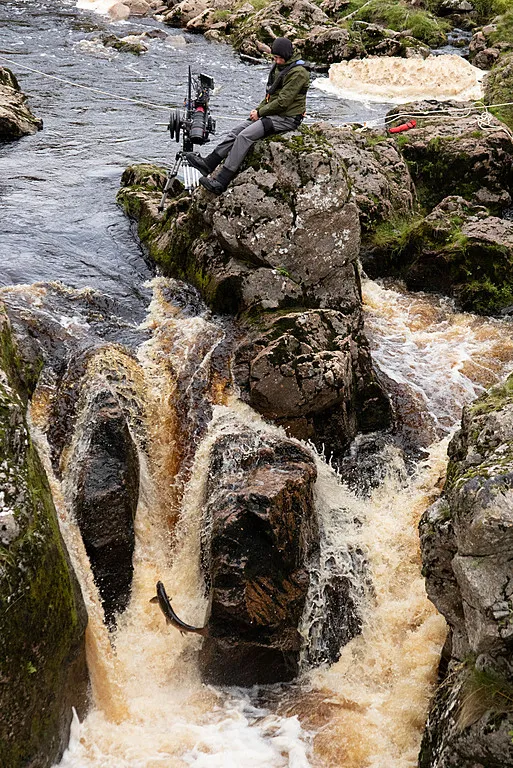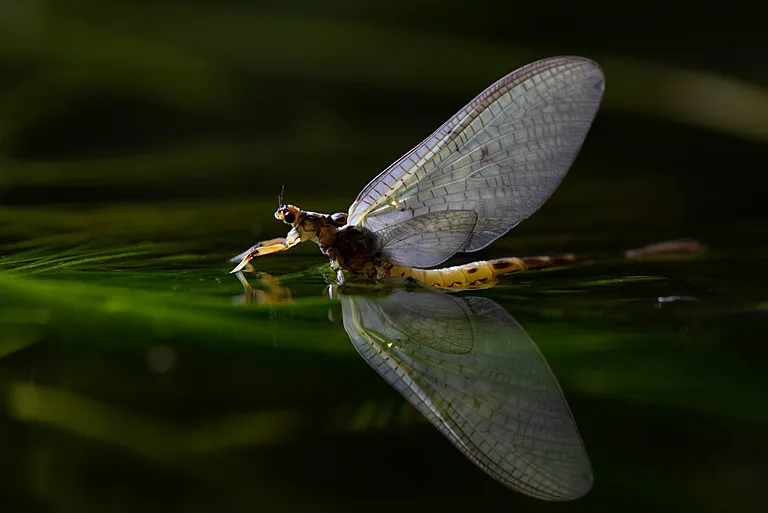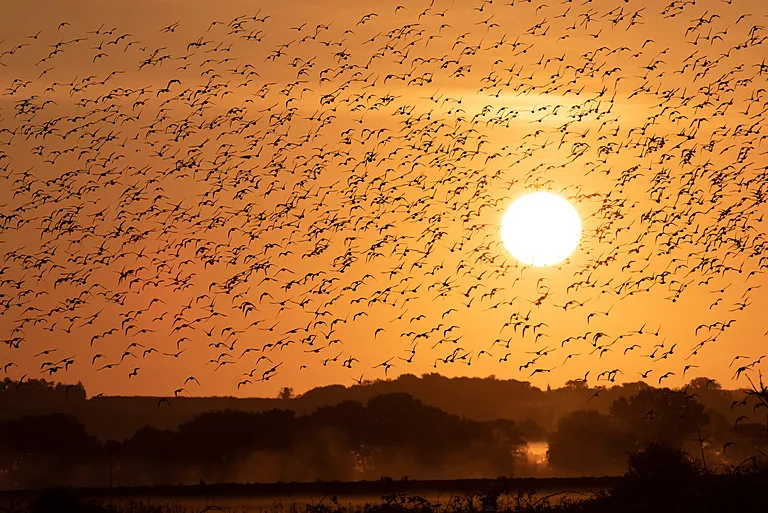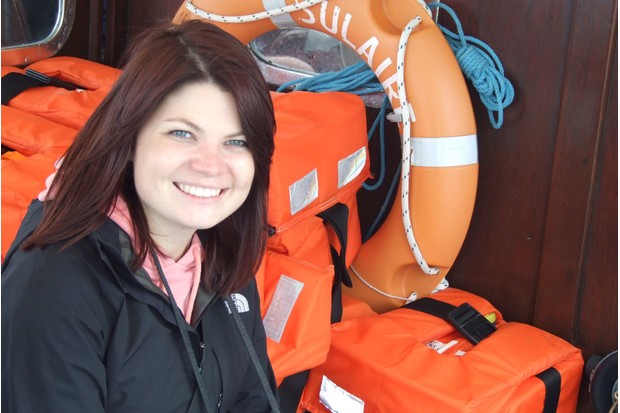Wild Isles is a five-part BBC series exploring how our woodland, grassland, freshwater and ocean habitats support wildlife of all kinds.
In episode four, Freshwater, Sir David Attenborough takes us on a journey from source to sea, following the course of our freshwater as it journeys through our landscapes.
Expect to see hobbies hunting a dragonflies, raft spiders becoming deadly assassins, dam-building beavers, lekking bats and amazingly rare chalk streams.
Here in Britain and Ireland, we have some of the loveliest rivers and lakes in the world. From the lochs of Scotland to the waterfalls of Wales. From the great Shannon River in Ireland, to small, intimate chalk streams. But today, less than half of our rivers and lakes are in good health for nature. In this episode we will reveal the crucial role that freshwater plays in supporting wildlife of all kinds.
Sir David Attenborough
When does Wild Isles air?
Episode four, Freshwater, airs on BBC One and iPlayer on Sunday 2nd April at 7pm.
What are the key stories in episode four?

Salmon, Scottish Highlands
In North Atlantic waters, when the time and conditions are right, salmon will move from the ocean to their freshwater breeding grounds, but their journey is fraught. The fish must swim against the current, leap up waterfalls and navigate weirs to reach the shallows where they were born – here, they will mate and lay eggs. The team attached cameras to underwater remote-controlled drones to capture this migration in full for the first time. It took 71 days to film, the longest of any sequence in the Wild Isles series.
Daubenton’s bats, North York Moors
Daubenton’s bats gather in large roosts dominated by females in the lowlands, feeding almost exclusively up and down stretches of river and other bodies of water at night. Ecologists have studied colonies to find out how the male fits in to this arrangement. Remarkably, the Wild Isles team captured what is believed to be the first ever bat lek (a cluster of sexually displaying males). Using high-speed infrared cameras, a group of males were filmed coming together at night and flying in circles in an attempt to impress females.

Mayfly, River Avon
The emergence of the common or green drake mayfly creates a spectacle on a Wiltshire chalk stream, captured over many years by the Wild Isles crew. Nymphs lying at the bottom of the stream wait for the water temperature to reach approximately 14°C. Rising to the surface, black buds on the thorax open into wings and they become airborne. Many thousands emerge at the same time enabling some to survive and breed – a mayfly’s sole purpose in life.
Where is Wild Isles episode four filmed?
Hobbies and dragonflies: Somerset; Wiltshire
Salmon: Scottish Highlands
Beavers: Scotland
Raft spiders: Dorset
Caves and bats: North Yorkshire Moors; Northern Ireland
Mayfly: The River Avon
Toads and leeches: Somerset; Dartmoor
Great crested grebe: Cardiff; Suffolk
Knot: Norfolk
Check out more Wild Isles filming locations
Meet Wild Isles episode four producer Chris Howard
How does freshwater support different kinds of wildlife?
Well apart from the obvious (it’s water!) freshwater provides all kinds of different habitats and hiding places for so many different species of plant and animal. From the cold, fast flowing, highly oxygenated water of our uplands which are perfect for migratory fish such as salmon and sea trout, to the slower moving water bodies where grebes and mayfly dance and bats hunt.
Not to mention our pools, lakes and lochs which host an incredible array of invertebrates from raft spiders to dragonflies, birds such as hunting hobbies and mammals like the beavers that are making a welcome comeback across Britain and Ireland. Sadly, many of our rivers and lakes are now heavily polluted by human and agricultural waste, and we over-extract to such an extent that many of our crucial chalk streams now run dry every summer. Freshwater is a vital resource – and one all too often taken for granted.
Are there any freshwater species that really stuck in your mind?
The bats and the knot. The bats because until we switched the infrared cameras on to film their incredible hunting and swarming behaviour – you really wouldn’t have known they were even there. Once we could see using the cameras though, their unbelievable agility, speed and manoeuvrability became apparent – they were flying all around and between the crew the whole time and we just wouldn’t have known it! I spent one magical half hour lying on the ground watching the bats swarm silhouetted above me – a moment I will never forget as the click and calls were just about audible as they swooped low above me and they even came so close you could feel the wind from their wing beats on your face.

As for the knot – the spectacle of a hundred thousand waders taking to the air to avoid a stooping peregrine just as the sun sets is hard to beat. It also shows the importance of our estuaries – vital fuelling stations for migratory birds each winter - and is extra special because it only really happens three or four times a year when the tides, light and weather all come together. Spectacular.
What kit did you need to film Atlantic salmon migrating?
Where do I start! Because I was trying to film as much of the migration as possible this was a shoot that required all the toys...from high-speed cameras to film the leaping fish to remote cameras to try to catch otters. We built bespoke hides where we thought eagles might be coming down, flew drones over at least six different rivers and put out small underwater rigs to catch spawning behaviour. But the piece of kit that probably made this most exciting was our underwater drone, or Remotely Operated Vehicle (ROV). These ROVs are usually used for underwater surveying, checking manmade structures for defects and the like, so this was quite a novel use for it.
Richard ‘Taff’ Davis is a fisherman who has all but hung up his rods in exchange for cameras, he had been experimenting with filming salmon underwater for years and knew better than anyone how skittish they can be with people and kit in the water. But his initial trials of the ROV were promising – for some reason the fish didn’t seem to mind a bright yellow submarine where they would flee when almost anything else entered the water! By manoeuvring the ROV slowly and with the greatest of care, Taff was able to get close to the fish like never before. This gave us some unique views; shoals of fish gathering off the coast before starting their migration; large groups waiting in the shallows for the rain to come; and the shot that Taff was most keen to get of all, an underwater shot of the salmon taking off on their epic leaps.
How did you film the bat lek?
Filming the bat swarm has been on my radar for years. Professor John Altringham is one of the leading bat experts in the British Isles and I had worked with him before, so when I started on Wild Isles, I called him up to discuss potential bat ideas. He had discovered the swarming site many years before and thought there was a good chance we might reveal what was happening in a detailed and visually attractive way.
We used a high-speed infrared camera usually used for scientific research – this was one of its first forays into wildlife filming so using it was a bit of a punt. To make it work, we rigged up the swarm site with a lot of infrared lights (we have to use infrared as the bats are disturbed by white light), set the camera up and settled down to wait with bat detectors spread around at crucial points.
By 11pm there were only a few bats circling, but slowly numbers started to build and suddenly around midnight the detectors erupted and once we turned the camera on, the arena was full of around 15-20 bats. We set to work and cameraman Mark Payne-Gill was soon getting his eye in. Filming the bats in the pitch black when you can only see them through the camera, and when they dance around constantly, was an almost impossible task and to this day I have no idea how he managed to get most of the shots he did.
The rest of us rushed around in the dark, tripping over ourselves as we furiously adjusted the lights rigged in the trees and on the steep slopes and changing batteries which the lights went through at an incredible rate. Sadly, we only really had three nights with good numbers as the bats are very sensitive to wind, rain and temperature – so even though the shots we got show the swarm like it has never been seen before, it still feels like unfinished business and I would love to go back and try again.
Main image: Juvenile hobby hunting dragonfly over small lake, Surrey. © BBC/Silverback Films/Jack Barnes

